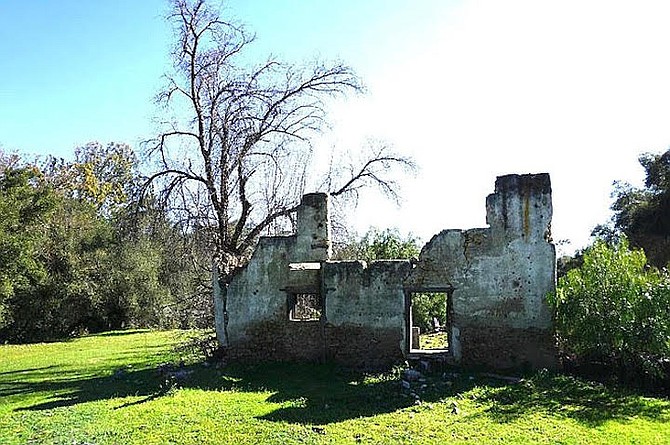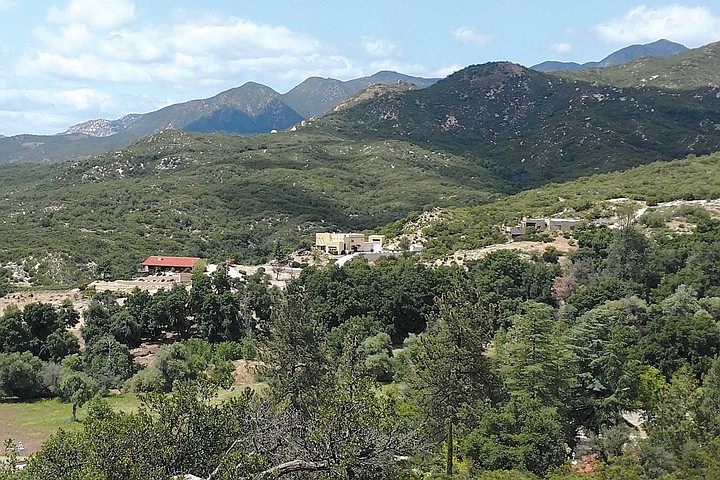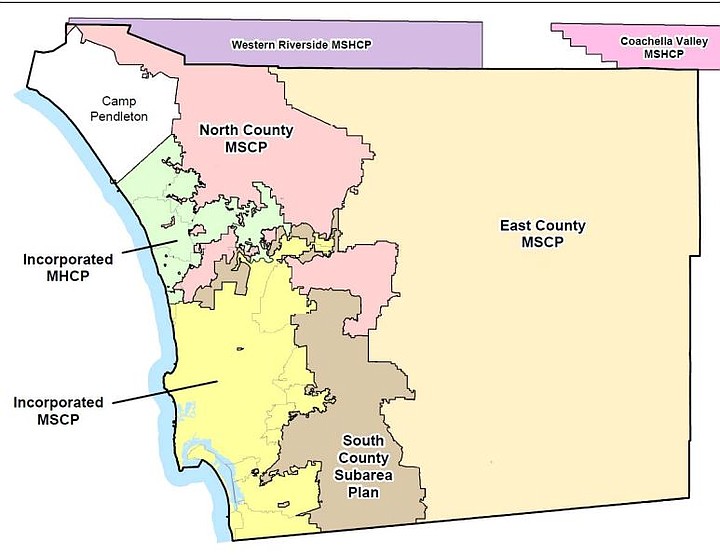 Facebook
Facebook
 X
X
 Instagram
Instagram
 TikTok
TikTok
 Youtube
Youtube

A draft plan to preserve thousands of acres of natural habitat in North County was unanimously approved by supervisors last week, but changes were called for.
The San Diego Multi-Species Conservation Plan aims to balance habitat protection with the need for housing, recreation, and agriculture. The South County rolled out a plan in 1998, and has conserved over 79,000 acres.

"It's very important to do this now," said Laura Hunter, coordinator with the Wildlife Habitat Conservation Coalition. In the 20 years since the South County Plan was adopted, critical North County habitat and corridors "have been under intense threat of loss."
Among the projects that have targeted the land are Lilac Hills (rejected by the county), Newland Sierra (turned down by voters), and Harvest Hills, formerly Safari Highlands (still in the works).
Under the plan, private companies and public entities take over swaths of land and use them to buffer development. In turn, the county receives long-term permits from wildlife agencies under endangered species laws.
The permits provide regulatory assurances. Without the plan, any development faces an onerous process through the federal government, said supervisor Dianne Jacob.
The North County Plan area covers about 316,000 acres, and the county expects 26,450 houses and apartments may be built. Roughly half would be within village areas; 40 percent within semi‐rural areas, and 10 percent within rural designated areas.

Meetings in spring 2017 included members of the public, and suggestions from wildlife agencies, environmental groups, the building industry and others went into a report prepared by ICF Consulting.
Of the five options presented, environmental groups and the building industry all favored option 5.
"Any other option makes unlikely the assemblage of effective wildlife corridors between core habitat areas," said a letter from the Wildlife and Habitat Conservation Coalition.
Most participants agreed option 5 was aligned with the county's general plan, eases the effort to build new housing, and offers the greatest environmental benefits at the least expense.
The initial plan would cost $3.5 million; the 50-year plan would run up to $360 million, according to the Parks and Recreation Department.
"The savings to developers is in the billions," Hunter said.

But what about the benefits to farming?
"Our agricultural community is highly concerned about this plan," said Hannah Gbeh, executive director of the San Diego Farm Bureau.
"Since 2010, we've experienced a 22 percent decline in agricultural acreage," she said; a loss of about 70,000 acres of county farmland. And the majority of farmland is located in the North County plan's area, she added.
"We need assurances the North County plan will not kill agriculture."
The one thing the farm bureau supports, environmental groups oppose. It's the exclusion of the Rancho Guejito farm, the largest, intact Mexican Land Grant in the state. Over 20,000 acres of prized habitat its owner declined to include.
"The plan would be massively diminished by the loss of Rancho Guejito," said Frank Landis, chair of the California Native Plant Society. "This property either enables or blocks a major north-south wildlife corridor."
Even if the owner is unwilling to participate, the property should be included as a major amendment area, subject to future negotiations, they said.
Another property the groups want to see in the plan is Warner Springs Ranch. It offers the large grassland areas and remote rocky nesting sites needed by the golden eagle - a rapidly declining species that was somehow left out.
Along with the golden eagle, they urged adding Engelmann oak, which was on the plan originally as a keystone species. Drought and beetle infestations are a threat, they said, and the loss of oak woodlands in the plan area would be catastrophic to other species.
Landowner Camille Perkins called the plan "a sham," saying it "identifies sacrificial land to bear the preservation burden for the region."
According to the county, the plan doesn't put a moratorium on development or say where it can occur, but all projects must conform with it.
A final draft won't be ready until 2024 or 2025, giving ample time for more outreach to property owners and the Farm Bureau.
Touting the success of the South County plan, which they hope to duplicate, Jacob noted that it took only five years to complete.
"Unfortunately, we haven't had quite the same success in North County because 23 years later we're still working on that plan."


A draft plan to preserve thousands of acres of natural habitat in North County was unanimously approved by supervisors last week, but changes were called for.
The San Diego Multi-Species Conservation Plan aims to balance habitat protection with the need for housing, recreation, and agriculture. The South County rolled out a plan in 1998, and has conserved over 79,000 acres.

"It's very important to do this now," said Laura Hunter, coordinator with the Wildlife Habitat Conservation Coalition. In the 20 years since the South County Plan was adopted, critical North County habitat and corridors "have been under intense threat of loss."
Among the projects that have targeted the land are Lilac Hills (rejected by the county), Newland Sierra (turned down by voters), and Harvest Hills, formerly Safari Highlands (still in the works).
Under the plan, private companies and public entities take over swaths of land and use them to buffer development. In turn, the county receives long-term permits from wildlife agencies under endangered species laws.
The permits provide regulatory assurances. Without the plan, any development faces an onerous process through the federal government, said supervisor Dianne Jacob.
The North County Plan area covers about 316,000 acres, and the county expects 26,450 houses and apartments may be built. Roughly half would be within village areas; 40 percent within semi‐rural areas, and 10 percent within rural designated areas.

Meetings in spring 2017 included members of the public, and suggestions from wildlife agencies, environmental groups, the building industry and others went into a report prepared by ICF Consulting.
Of the five options presented, environmental groups and the building industry all favored option 5.
"Any other option makes unlikely the assemblage of effective wildlife corridors between core habitat areas," said a letter from the Wildlife and Habitat Conservation Coalition.
Most participants agreed option 5 was aligned with the county's general plan, eases the effort to build new housing, and offers the greatest environmental benefits at the least expense.
The initial plan would cost $3.5 million; the 50-year plan would run up to $360 million, according to the Parks and Recreation Department.
"The savings to developers is in the billions," Hunter said.

But what about the benefits to farming?
"Our agricultural community is highly concerned about this plan," said Hannah Gbeh, executive director of the San Diego Farm Bureau.
"Since 2010, we've experienced a 22 percent decline in agricultural acreage," she said; a loss of about 70,000 acres of county farmland. And the majority of farmland is located in the North County plan's area, she added.
"We need assurances the North County plan will not kill agriculture."
The one thing the farm bureau supports, environmental groups oppose. It's the exclusion of the Rancho Guejito farm, the largest, intact Mexican Land Grant in the state. Over 20,000 acres of prized habitat its owner declined to include.
"The plan would be massively diminished by the loss of Rancho Guejito," said Frank Landis, chair of the California Native Plant Society. "This property either enables or blocks a major north-south wildlife corridor."
Even if the owner is unwilling to participate, the property should be included as a major amendment area, subject to future negotiations, they said.
Another property the groups want to see in the plan is Warner Springs Ranch. It offers the large grassland areas and remote rocky nesting sites needed by the golden eagle - a rapidly declining species that was somehow left out.
Along with the golden eagle, they urged adding Engelmann oak, which was on the plan originally as a keystone species. Drought and beetle infestations are a threat, they said, and the loss of oak woodlands in the plan area would be catastrophic to other species.
Landowner Camille Perkins called the plan "a sham," saying it "identifies sacrificial land to bear the preservation burden for the region."
According to the county, the plan doesn't put a moratorium on development or say where it can occur, but all projects must conform with it.
A final draft won't be ready until 2024 or 2025, giving ample time for more outreach to property owners and the Farm Bureau.
Touting the success of the South County plan, which they hope to duplicate, Jacob noted that it took only five years to complete.
"Unfortunately, we haven't had quite the same success in North County because 23 years later we're still working on that plan."
Comments